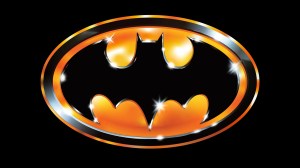Sakamoto Days and Black Clover are both published under Shueisha and were once serialized in the same magazine, Weekly Shonen Jump, until Black Clover transitioned to Jump GIGA, Shueisha’s seasonal magazine. Both are widely popular, and even after its departure from Shueisha’s flagship magazine, Black Clover remains beloved among fans who eagerly await the conclusion of its story and the return of its anime. Meanwhile, Sakamoto Days continues to serve as one of the main pillars of Weekly Shonen Jump and, like Black Clover, is currently in its final arc.
Videos by ComicBook.com
While both series are cherished, Black Clover could be considered more popular in terms of overall impact and an astonishingly popular anime, and is often recognized as part of a new generation of Shonen Jump titles. However, the series ultimately left Weekly Shonen Jump, reportedly due to the creator, Yuki Tabata’s desire for a more flexible schedule, which is far from unreasonable given how this level of output can affect mangaka health. Although this was a major factor, in retrospect, Shonen Jump’s willingness to let the series go may also reflect its sales performance. Despite its popularity, Black Clover did not generate as much revenue as Sakamoto Days is now achieving proportionally. The latest milestone reached by Sakamoto Days suggests that, in relative terms, it is outperforming Black Clover.
Relatively, Sakamoto Days Has More Copies in Circulation Than Black Clover

Sakamoto Days recently announced that its 23rd volume will be released on August 4th, alongside the news that the series has surpassed 15 million copies in circulation. This milestone is significant both for the series and for Weekly Shonen Jump. The achievement becomes even more impactful when compared to Black Clover, one of Shonen Jump’s major titles. Before its departure from the weekly magazine, Black Clover had reached 19 million copies in circulation across 35 volumes.
In comparison, with 12 more volumes and nearly 140 more chapters than Sakamoto Days, which is currently at around 220 chapters, Black Clover had proportionally fewer copies in circulation at the time of its run in the magazine. Notably, the 15 million milestone for Black Clover was achieved in May 2021 after the release of its 28th volume, which is five more volumes than Sakamoto Days’ current run. For every volume between each series during their Shonen Jump tenure, which is as high-profile as it gets, Sakamoto Days would outsell Black Clover on average by nearly 110,000 copies per volume released.
In terms of anime, Black Clover has aired 170 episodes, while Sakamoto Days has only 16 episodes so far, suggesting that even with a significantly longer anime run, it didn’t help boost the sales as much. Thus, based on sales performance and proportional growth, Sakamoto Days appears to be a bigger asset to Shonen Jump than Black Clover was during its weekly serialization. However, this does not diminish the accomplishments of either series.
Both have had significant success in their own right. Since leaving the weekly magazine, Black Clover has released only one new volume, limiting its recent opportunities to reach major milestones. There’s also something to be said about the phenomenal success of Black Clover’s anime over time, and the hype it’s generating for Studio Pierrot bringing the story back to adapt its strongest arc, and presumably, its finale. But performance for their home publications is not a metric that should be overlooked or scoffed at.
Nonetheless, with the manga approaching its final saga and the highly anticipated anime set to return, Black Clover is expected to make a strong resurgence. This final phase could push its numbers beyond what Sakamoto Days might ever reach. Still, as things currently stand, Sakamoto Days holds a proportionally stronger position within Shonen Jump than Black Clover did, which is an impressive achievement, indicating that the recent trend of tighter, more concise stories can keep readers more collectively engaged over time.









